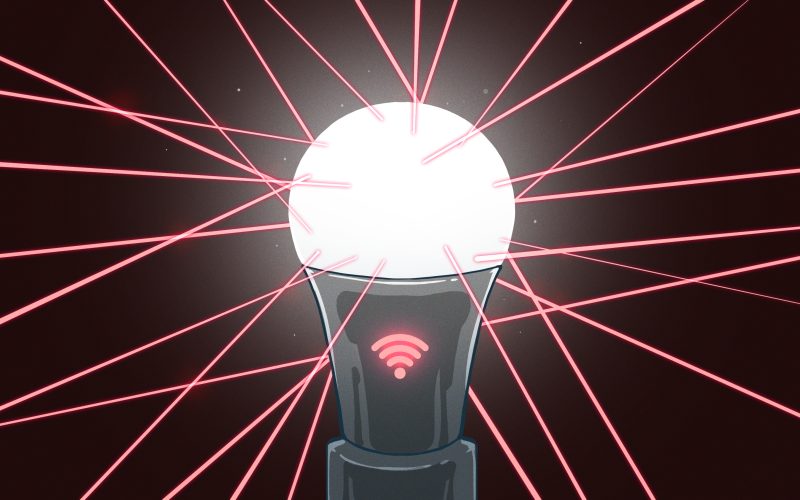
If you’ve got an existing smart home rig, motion sensors can be a useful addition to your setup. You can use them for all kinds of things, from turning on lights when you enter a room, to shutting off HVAC systems when an area is unoccupied. Typically, you’d add dedicated motion sensors to your smart home to achieve this. But what if your existing smart light bulbs could act as the motion sensors instead?
The Brightest Bulb In The Bulb Box
The most typical traditional motion sensors use passive infrared detection, wherein the sensor picks up on the infrared radiation emitted by a person entering a room. Other types of sensors include break-beam sensors, ultrasonic sensors, and cameras running motion-detection algorithms. All of these technologies can readily be used with a smart home system if so desired. However, they all require the addition of extra hardware. Recently, smart home manufacturers have been exploring methods to enable motion detection without requiring the installation of additional dedicated sensors.
Hue Are You?
 is moving through an area. Credit: Ivani</p>
<p>” data-medium-file=”https://hackaday.com/wp-content/uploads/2025/09/LayoutMesh_Gray3.webp?w=400″ data-large-file=”https://hackaday.com/wp-content/uploads/2025/09/LayoutMesh_Gray3.webp?w=625″ class=”size-medium wp-image-833786″ alt=”” width=”400″ height=”400″ srcset=”https://hackaday.com/wp-content/uploads/2025/09/LayoutMesh_Gray3.webp 1000w, https://hackaday.com/wp-content/uploads/2025/09/LayoutMesh_Gray3.webp?resize=250,250 250w, https://hackaday.com/wp-content/uploads/2025/09/LayoutMesh_Gray3.webp?resize=400,400 400w, https://hackaday.com/wp-content/uploads/2025/09/LayoutMesh_Gray3.webp?resize=625,625 625w” sizes=”auto, (max-width: 400px) 100vw, 400px”></a><figcaption class=) The technology uses data on radio propagation between multiple smart bulbs to determine whether or not something (or someone) is moving through an area. Credit: Ivani
The technology uses data on radio propagation between multiple smart bulbs to determine whether or not something (or someone) is moving through an area. Credit: IvaniPhilips has achieved this goal with its new MotionAware technology, which will be deployed on the company’s new Hue Bridge Pro base station and Hue smart bulbs. The company’s smart home products use Zigbee radios for communication. By monitoring small fluctuations in the Zigbee communications between the smart home devices, it’s possible to determine if a large object, such as a human, is moving through the area. This can be achieved by looking at fluctuations to signal strength, latency, and bit error rates. This allows motion detection using Hue smart bulbs without any specific motion detection hardware required.
Using MotionAware requires end users to buy the latest Philips Hue Bridge Pro base station. As for whether there is some special magic built into this device, or if Phillips merely wants to charge users to upgrade to the new feature? Well, Philips claims the new bridge is required because it’s powerful enough to run the AI-powered algorithms that sift the radio data and determine whether motion is occurring. The tech is based on IP from a company called Ivani, which developed Sensify—an RF sensing technology that works with WiFi, Bluetooth, and Zigbee signals.
To enable motion detection, multiple Hue bulbs must be connected to the same Hue Bridge Pro, with three to four lights used to create a motion sensing “area” in a given room. When setting up the system, the room must be vacated so the system can calibrate itself. This involves determining how the Zigbee radio signals propagate between devices when nobody—humans or animals—is inside. The system then uses variations from this baseline to determine if something is moving in the room. The system works whether the lights themselves are on or off, because the light isn’t used for sensing—as long as the bulb has power, it can use its radio for sensing motion. Philips notes this only increases standby power consumption by 1%, and a completely negligible amount while the light is actually “on” and outputting light.
Ultimately, WiZ beat Philips by years with this tech. However, perhaps due to its lower market penetration, it didn’t make the same waves when SmartSense dropped in 2022.
Radio Magic
We’ve seen similar feats before. It’s actually possible to get all kinds of useful information out of modern radio chipsets for physical sensing purposes. We’ve seen systems that measure a person’s heart rate using nothing more than perturbations in WiFi transmission over short distances, for example. When you know what you’re looking for, a properly-built algorithm can let you dig usable motion information out of your radio hardware.
Ultimately, it’s neat to see smart home companies expanding their offerings in this way. By leveraging the radio chipsets in existing smart bulbs, engineers have been able to pull out granular enough data to enable this motion-sensing parlour trick. If you’ve ever wanted your loungeroom lights to turn on when you walk in, or a basic security notification when you’re out of the house… now you can do these kinds of things without having to add more hardware. Expect other smart home platforms to replicate this sort of thing in future if it proves practical and popular with end users.


